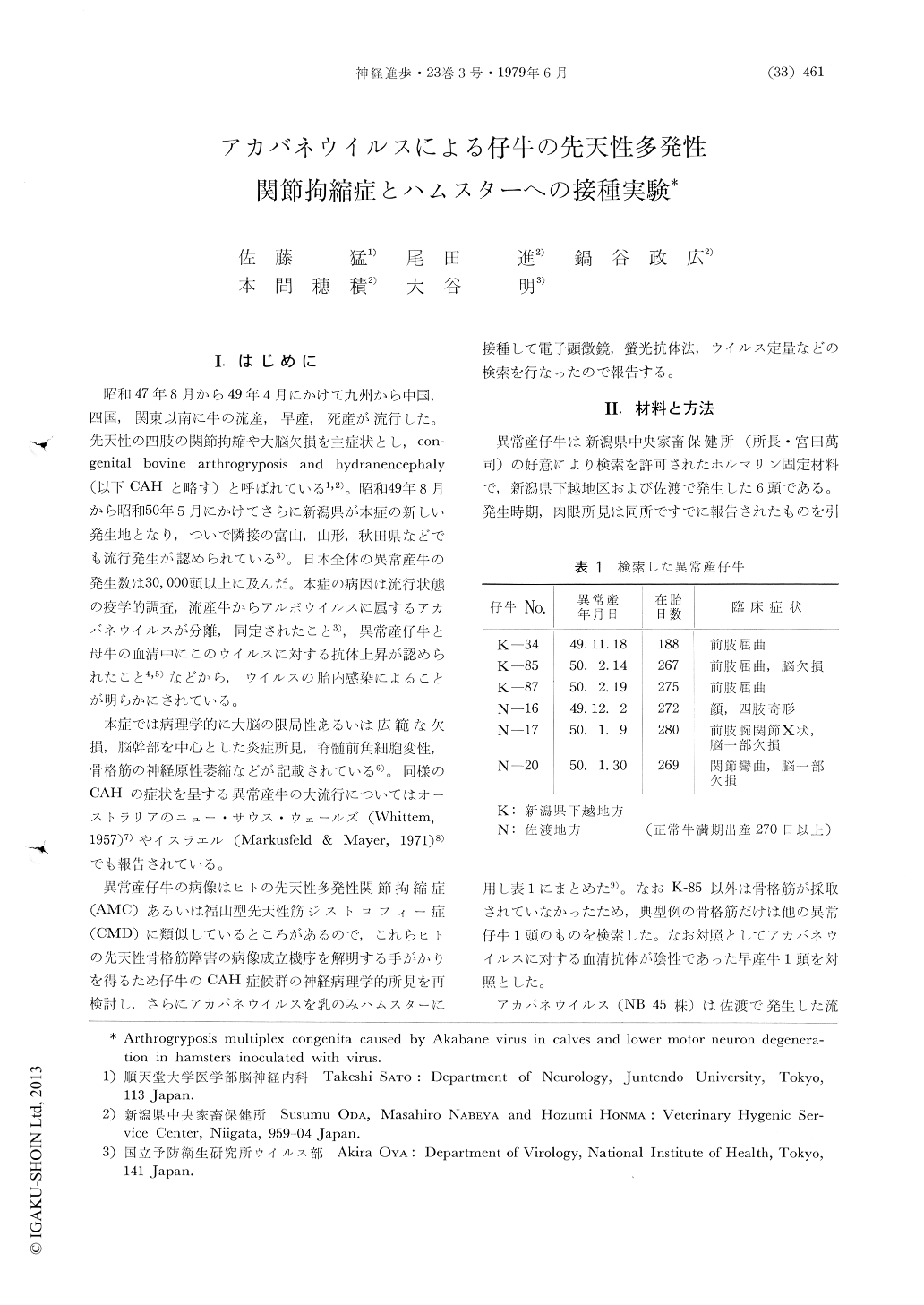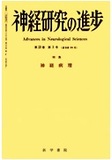Japanese
English
- 有料閲覧
- Abstract 文献概要
- 1ページ目 Look Inside
I.はじめに
昭和47年8月から49年4月にかけて九州から中国,四国,関東以南に牛の流産,早産,死産が流行した。先天性の四肢の関節拘縮や大脳欠損を主症状とし,congenital bovine arthrogryposis and hydranencephaly(以下CAHと略す)と呼ばれている1,2)。昭和49年8月から昭和50年5月にかけてさらに新潟県が本症の新しい発生地となり,ついで隣接の富山,山形、秋田県などでも流行発生が認められている3)。日本全体の異常産牛の発生数は30,000頭以上に及んだ。本症の病因は流行状態の疫学的調査,流産牛からアルボウイルスに属するアカバネウイルスが分離,同定されたこと3),異常産仔牛と母牛の血清中にこのウイルスに対する抗体上昇が認められたこと4,5)などから,ウイルスの胎内感染によることが明らかにされている。
本症では病理学的に大脳の限局性あるいは広範な欠損,脳幹部を中心とした炎症所見,脊髄前角細胞変性,骨格筋の神経原性萎縮などが記載されている6)。同様のCAHの症状を呈する異常産牛の大流行についてはオーストラリアのニュー・サウス・ウェールズ(Whittem,1957)7)やイスラエル(Markusfeld & Mayer,1971)8)でも報告されている。
Abstract
The great outbreak of congenital arthrogryposis hydranencephaly (AH) in calves in Japan during 1972 and 1975 was reported by most veterinarians. Serological studies revealed that the incidence of antibody for Akabane virus was high in cases with the AH syndrome compared with normal calves in the 1972~1973 outbreak (Inaba et al., 1975). Oda et al. (1976) succeeded in isolation of the Akabane virus, a member of the Simbu group of arboviruses, from the brains of two calves.

Copyright © 1979, Igaku-Shoin Ltd. All rights reserved.


